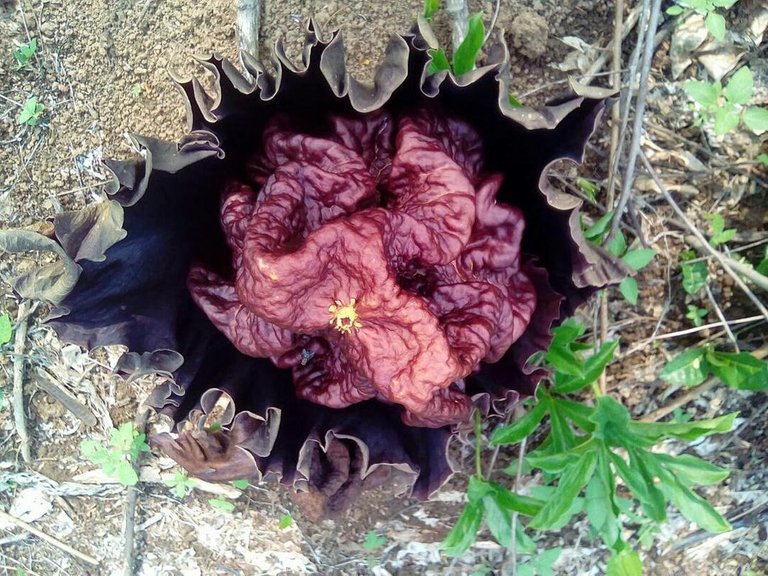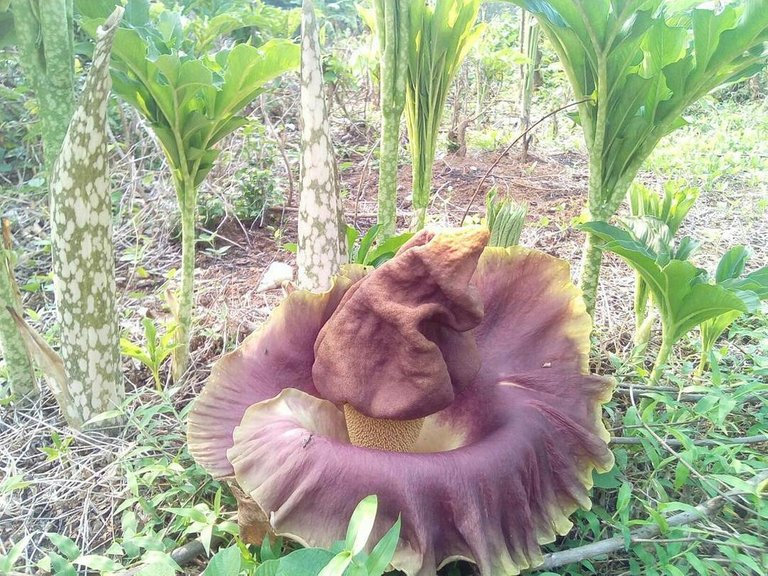The carcass or suweg is a group of plants of the genus Amorphophallus who are members of the family of Araceae (tals-talasan). The most recognizable type of carcass flower (Amorphophallus) is a giant carcass or giant suweg or titan arum that has the Latin name Amorphophallus titanum and Amorphophallus gigas or Sumatera Giant Amorphophallus. Amorphophallus titanum holds the record as the flower with the highest inflorescence structure in the world in the second Amorphophallus gigas.
Because our grandeur often considers carcass flowers as a species (species) only when this gigantic and highest interest consists of about 170 species around the world. What's worse, not a few who equate the carrion flower with Rafflesia flowers. Whereas between Amorphophallus and Rafflesia are two different flowers even though both are gigantic and produce a foul odor. Differences of rare flowers with rafflesia can be read in my article about Rafflesia Arnoldii Difference and Carrion Flower.
Know the Charcoal Flower Feature (Amorphophallus). The carcass flower in Latin is called Amorphophallus which comes from the Ancient Greek word "Amorphos" meaning "deformed, unformed" and "phallos" meaning "penis".

Carrion flower (Amorphophallus) is a typical lowland plants that grow in tropical and subtropical climates ranging from the west African region to the Pacific Islands including in Indonesia. For the most part, the carcass flower is an endemic species.
The carcass flower, which is the largest and highest compound plant in the world, includes plants from taro tribes (araceae) with varied shapes and tuber sizes of each species.
The carcass flower (Amorphophallus) undergoes two phases in its life that take place in turns and continuously, namely vegetative phase and generative phase. In the vegetative phase above the carcass flowers grow single stems and leaves that look like papaya leaves. Until then the stems and leaves to wither remain tubers in the soil.
When conditions permit, the vegetative phase will be followed by a generative phase of the emergence of compound interest that replaces the wilted stems and leaves. These two phases do happen over and over again.
When the carcass flower undergoes a generative phase (blossoming of flowers), this highest flower gives off a pungent smell like the smell of a carcass. This stench serves as a lure for flies and beetles in which the insects will contribute to the pollination process. If during the blooming period of fertilization, it will form red fruit with seeds on the former base of the flower. And the carcass flowers then re-enter the vegetative phase.

